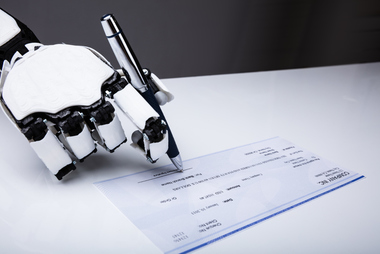
What Exactly Is Payroll Automation?
 Managing payroll is often regarded as an overwhelming and daunting task. From tracking the unique tax codes for each of your employees and the seemingly countless deduction options to determining whether each employee is an hourly or salaried worker, there are many details to be mindful of, all while avoiding making payroll-related errors.
Managing payroll is often regarded as an overwhelming and daunting task. From tracking the unique tax codes for each of your employees and the seemingly countless deduction options to determining whether each employee is an hourly or salaried worker, there are many details to be mindful of, all while avoiding making payroll-related errors.
How automating your payroll processing system can help you
Did you know that paychecks no longer need to be manually deposited into the bank accounts of your employees? Instead, with the help of a customized and accurate system, you can rely on automation to compute payroll data and process payroll in a timely fashion.
What can automation do for you?
Automating your payroll processing system allows you to ensure that employees have convenient access to their wages beyond regular pay periods. Understanding the earnings of non-salaried employees requires a comprehensive grasp of their work hours.
Establishing a centralized platform enables employees to input their hours, adjust shifts, document overtime, and submit everything for supervisor approval. This, in turn, fosters efficiency and cohesiveness across the payroll-processing board.
The right timekeeping measures will not only allow management to track and audit employee hours with ease but will also streamline the process of reviewing submitted hours. In fact, automating payroll can even make navigating payroll taxes a breeze. You can monitor and apply the appropriate taxes for employees in various parts of the world with greater ease than ever before.
This will not only ensure that appropriate tax requirements are adhered to but also help you withhold accurate deductions from one employee to the next. Never again will you have to worry about accidentally failing to be in compliance with tax codes or laws.
A payroll automation system can reduce the odds of a payroll error and help you eliminate concerns about missing tax filing deadlines. Furthermore, you’ll be able to streamline the process of recording and preserving new-hire information, ranging from I-9 details to W-4 tax statuses and everything in between. By incorporating new-hire onboarding steps into your payroll process, you can make the experience that much easier and more convenient for new hires as well as for yourself as the employer.
When you automate payroll and introduce a portal that employees can use, you’ll give your workers access to a user-friendly platform where they can update or review their employment information. From changing addresses to altering marital statuses and more, a system like this grants employees the ability to log in to the platform, input information about themselves, and save the details.
Even better, employees can utilize platforms like this to view upcoming paychecks and adjust pretax deductions, making it as simple as ever to manage all types of personal data. This holistic approach to automated payroll processing makes for an efficient and accurate method of operations that suits the needs of employees and employers alike.
The advantages of payroll automation
When you automate payroll, a major perk is that employee-related information will no longer need to be shared in ways that put your employees’ private data at risk. When emailing personal information or printing files containing private details, both accidental and intentional security risks can arise.
Thankfully, automated payroll processes can eliminate that issue. Instead, you can keep all important information contained within a secure and central location that is accessible only to those who are entitled to that information and are trustworthy.
According to the American Payroll Association, automation can lower the costs of payroll processing by approximately 80% on average. In fact, within that percentage, the majority of these cost-related savings stem from the reduction of paycheck- and invoice-related errors.
That’s why it is absolutely imperative that you train your employees on how to properly use the company’s payroll system. You can start by having your employees watch free trials and practice using the payroll processing system for hands-on experience before signing them up for actual payroll processing within the company.
Before committing to any options, make sure you compare prices, analyze the available features, and read online reviews with a grain of salt. Once you commit to automating your payroll process, you can partner with a finance team. Even better, by bringing a finance team in-house you can save money by keeping payroll within the company instead of outsourcing.
In the process of automating payroll, ensure that you are always in compliance with IRS tax laws. Read about payroll regulations and practice generating reports — like profit-and-loss statements or other documentation — that you will need to complete come tax time.
Also, when searching for an automation product, keep the size of your company in mind. Ensure that the service you have selected is capable of growing alongside your business. Also, prior to rolling out a new payroll processing system, double-check that your employees are on board and prepared for the change.



